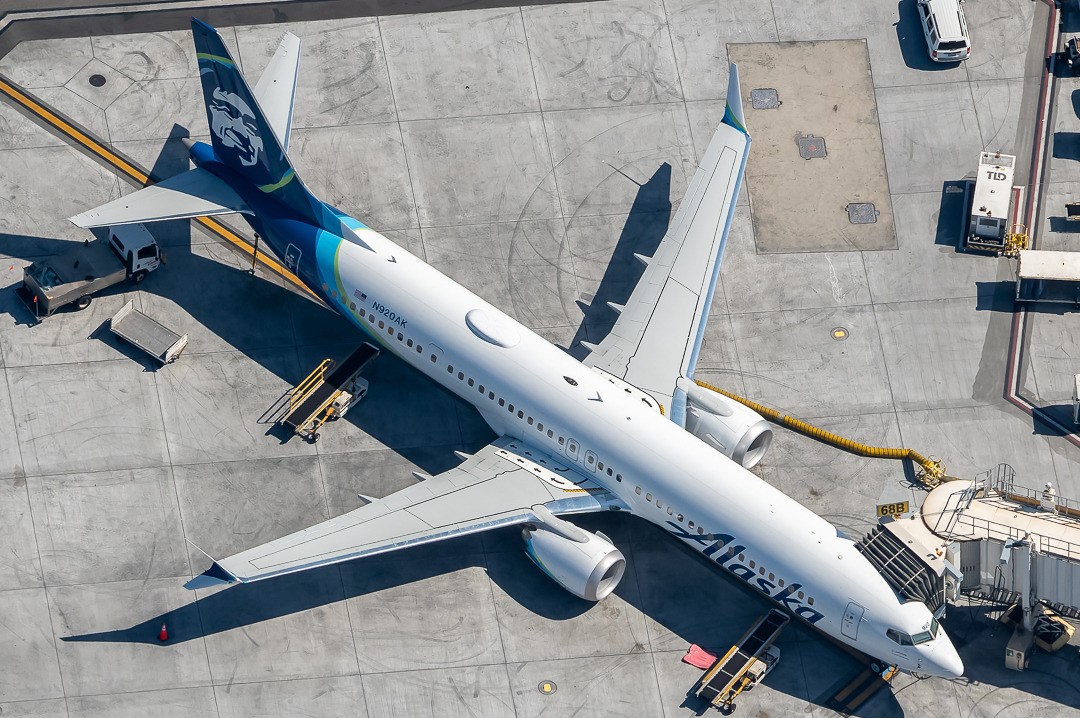Boeing CEO Dave Calhoun has openly acknowledged the company’s responsibility in the recent Alaska Airlines 737 MAX incident. In a significant move towards transparency, Calhoun assured full cooperation in the ongoing investigation during a safety meeting with employees at the Renton factory. This incident, involving Flight 1282, has further shaken the already fragile trust in the 737 MAX series, following the tragic crashes in 2018 and 2019 and other production issues. Calhoun’s commitment to “100% and complete transparency” marks a departure from past criticisms of Boeing’s handling of safety concerns and a “culture of concealment” identified in a congressional report.
“we’re going to approach this – number one – acknowledging our mistake.”
Boeing’s CEO said in a safety meeting with employees at its factory in Renton, Washington
The aircraft in question, registered as N704AL and delivered to Alaska Airlines in October 2023, had previously displayed pressurization warnings. Alaska Airlines had restricted the aircraft from long overwater flights as a safety measure but continued its operation. This revelation raises concerns about the decision-making processes regarding aircraft safety and maintenance within the airline.
Join us on TELEGRAM for the Latest Aviation Updates fresh to your phone.

Boeing is now tasked with providing revised instructions to all MAX 9 operators, reflecting feedback from both operators and regulatory authorities. The Federal Aviation Administration (FAA) has grounded all 737 MAX 9 jets equipped with a plug door, totaling 171 aircraft. This directive prioritizes “the safety of the flying public” over speed of resolution. In response, Alaska Airlines, which initially resumed operations of its MAX 9 fleet after inspections, has grounded all 65 of its MAX 9 aircraft in compliance with the FAA’s order.

The National Transportation Safety Board (NTSB) investigators suggest that the incident likely occurred due to inadequate bolting of the door plug. This revelation comes after both Alaska Airlines and United Airlines found “loose hardware” in their 737 MAX 9 inspections. The door plug, manufactured by Spirit AeroSystems, a Boeing partner, is under scrutiny, although no specific blame has been assigned to Spirit AeroSystems at this time. The NTSB’s current stance does not point to a design flaw, indicating potential issues with Boeing’s assembly process or a specific defect in this door plug’s production.
This incident puts Boeing’s assembly process under intense scrutiny, as the company has faced accusations of prioritizing production targets over thorough quality checks in the past. The focus is now on determining whether the issue with the door plug was a one-off defect or indicative of broader systemic issues in Boeing’s manufacturing and quality assurance processes.
Featured Image by Olzhas Ismagulov
Youssef Yahya is the CEO and Founder of Aviation for Aviators. He also serves as the Chief-in-Editor of the platform’s website, where he shares his passion for aviation and provides valuable resources for aviation enthusiasts and professionals alike. His love for aviation and entrepreneurial spirit drive him to create innovative solutions, making Aviation for Aviators a unique resource in the aviation sector.
You might also like:
- Qatar Airways Flight Forced to Divert Due to Clear Air Turbulence
- Emirates Signs Tourism Agreements to Boost Travel to Morocco and Zimbabwe
- Ethiopian Airlines Expands Fleet with Additional Airbus A350-900s
- How Do World Leaders Fly?
- How Do Fighter Jets Land On Aircraft Carriers?
Discover more from Aviation for Aviators
Subscribe to get the latest posts sent to your email.

